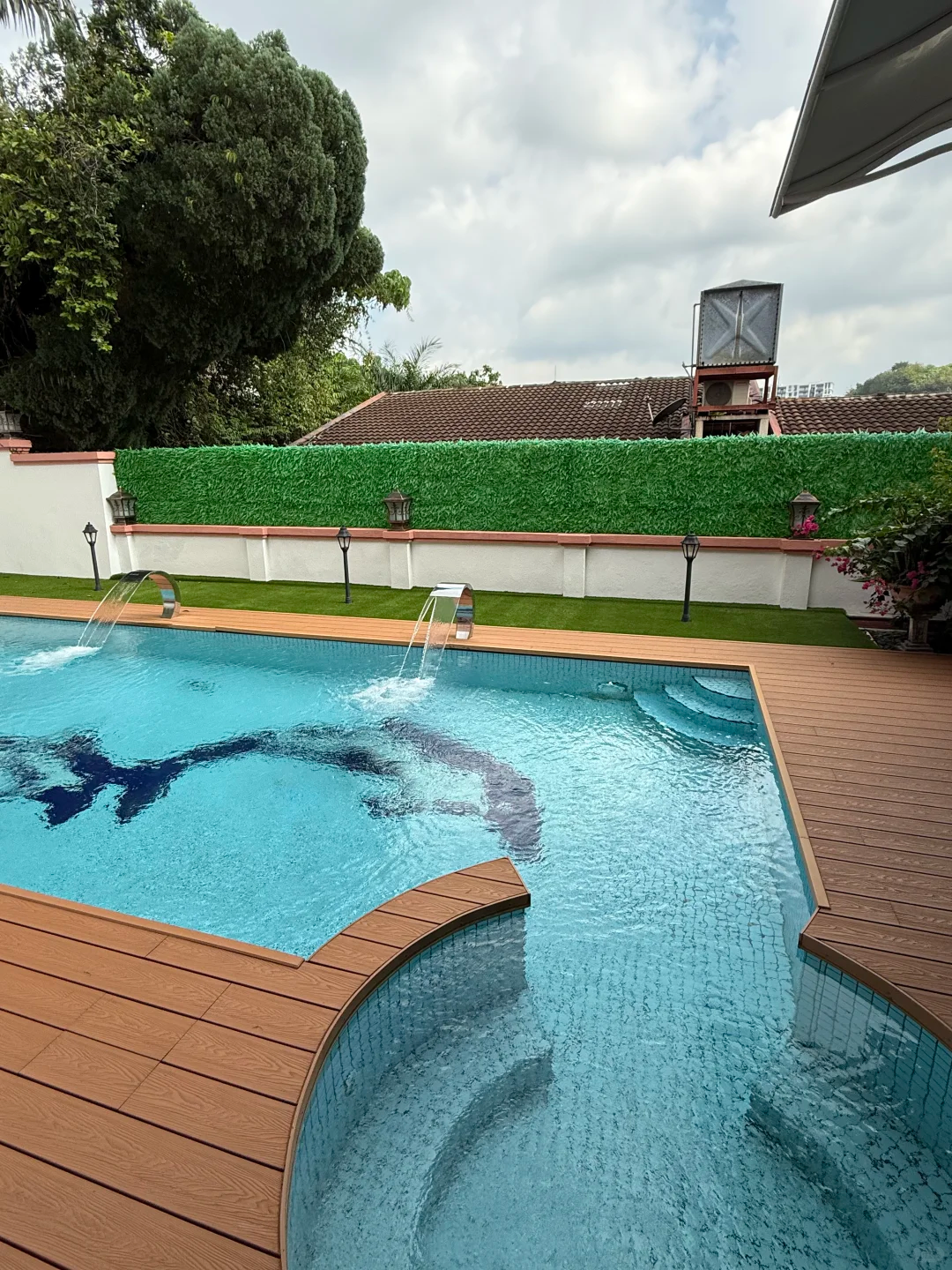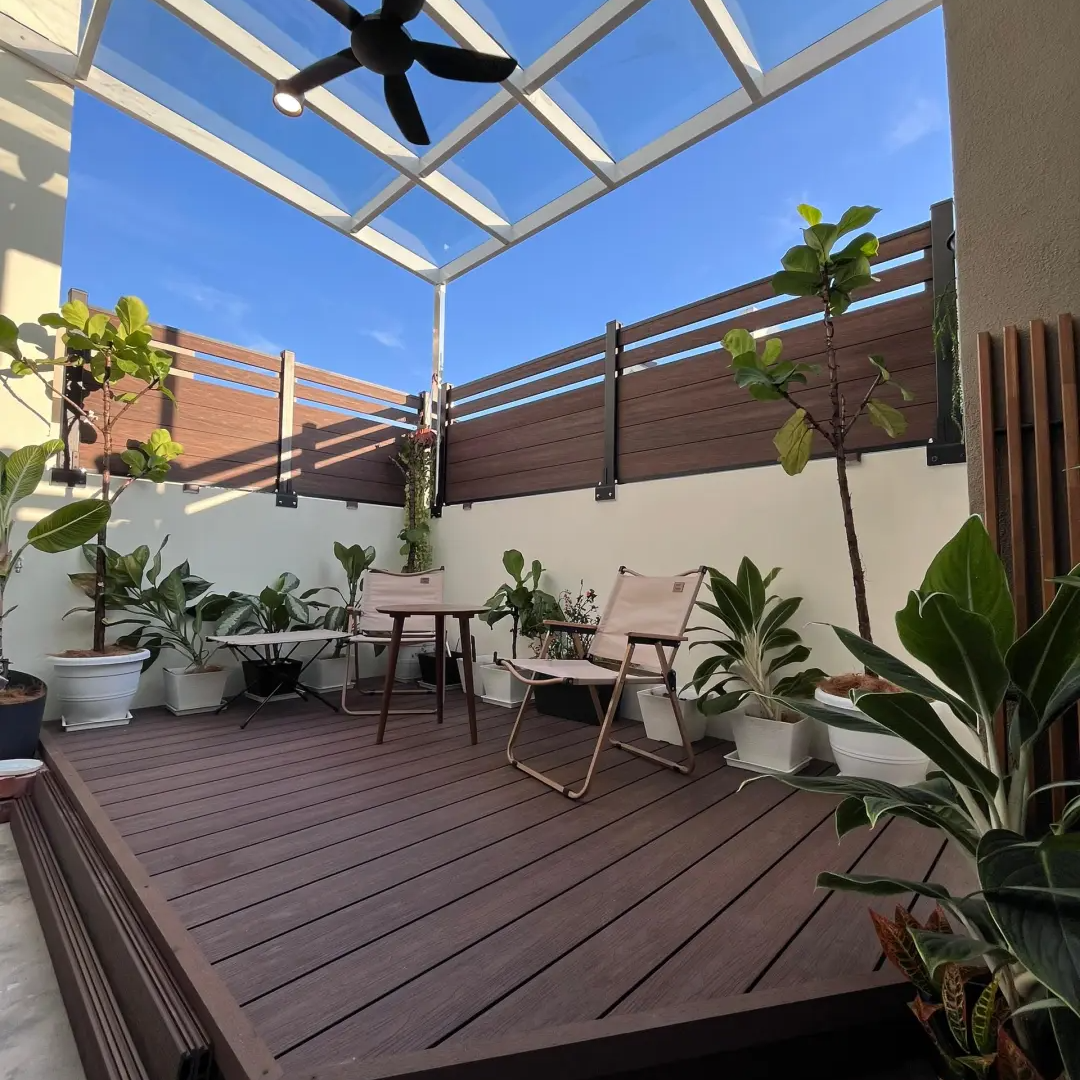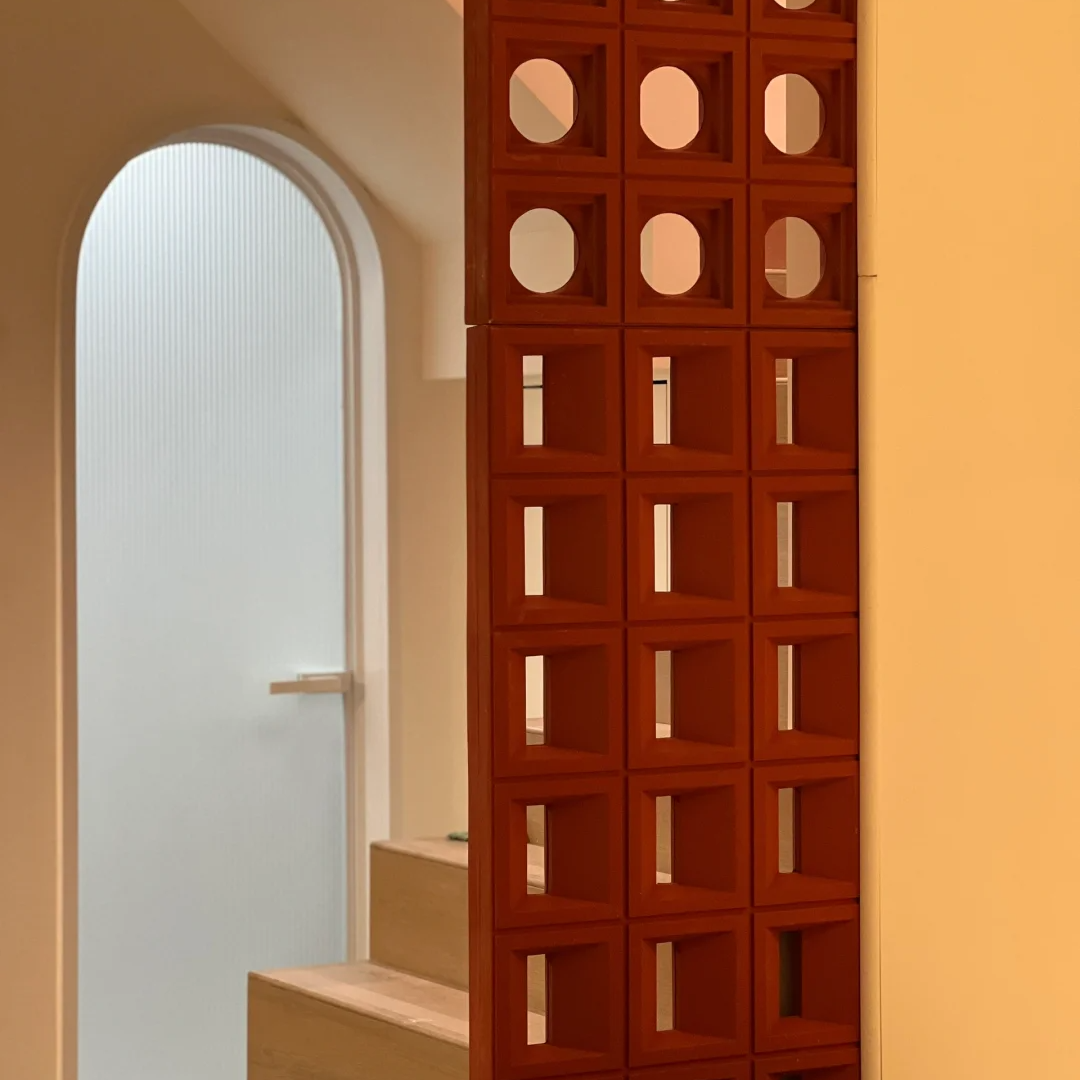WPC hollow decking is mainly chosen in situations where lightweight, cost-effective, and practical solutions are needed compared to solid WPC decking.
When to use WPC hollow decking
Residential projects – Ideal for backyards, balconies, patios, and rooftop terraces where load-bearing is moderate, not heavy.
Large-area coverage – Because it’s lighter and more economical, hollow decking helps reduce overall costs for wide spaces like gardens or walkways.
Where weight matters – Suitable for installations on raised platforms, balconies, or rooftop decking where reducing structural load is important.
Budget-sensitive projects – Hollow boards use less material than solid ones, making them cheaper while still providing the wood-plastic composite benefits.
Areas with good foundation support – Works well where the base is stable (like concrete, joist framing, or pedestal system), since hollow boards are not as strong as solid ones for extreme heavy loads.
Moderate foot traffic – Great for normal family use, but not for high-traffic public spaces like commercial boardwalks.
Comparison with solid decking
Hollow decking → lighter, cheaper, eco-friendly, easy to handle; but less load-bearing and may be noisier under footsteps.
Solid decking → stronger, more durable for heavy load and high traffic; but heavier and more expensive.
In short: use WPC hollow decking for residential, cost-effective, and lightweight decking projects, while choose solid decking for heavy-duty or commercial use.



